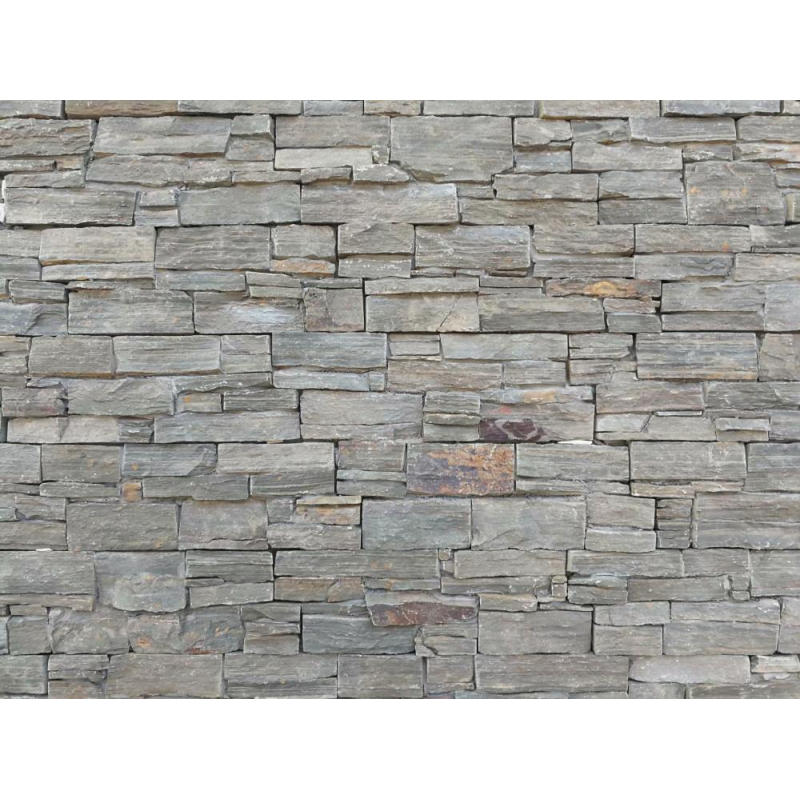
طبیعي ډبره یو له هغو موادو څخه دی چې په کورونو او باغونو کې کارول کیږي. مګر ایا تاسو کله هم حیران شوي یاست چې ستاسو ځانګړي ډبرې، خښتې، یا فرش له کوم ځای څخه راغلي دي؟

Natural stone was created thousands of years ago when the Earth was just a ball of mineral gases. As these gases began to cool down, they compressed and solidified to form the world we know today. It was during this process that natural stone was formed – the type of stone created depends on what type of minerals were combined at that time. This was a slow process that occurred over millions of years. As the Earth began to settle, many of these seams of stone were gradually pushed to the surface by heat and pressure, creating the large formations we see today.
Stone can come from anywhere in the world, and the type of stone is determined by its origins. There are quarries in America, Mexico, Canada, Italy, Turkey, Australia, and Brazil, as well as many other countries around the globe. Some countries have multiple natural stone quarries, whilst others only have a few. Let’s look in closer detail at where particular stones originate and how they were formed.
مرمر is the result of limestone that has been altered through heat and pressure. It’s a versatile stone that can be used on virtually anything – statues, stairs, walls, bathrooms, counter tops, and more. Usually seen in white, marble is also common in black and grey tints, and has great weather endurance.
کوارټزایټ د شګو ډبرې څخه سرچینه اخلي چې د تودوخې او کمپریشن له لارې بدل شوي. ډبره په عمده توګه په سپینو کې راځي، مګر د نسواري، خړ، یا شنه رنګونو سره هم موندل کیدی شي. دا د طبیعي ډبرو یو له خورا سخت ډولونو څخه دی ، دا د مخونو ، کاونټرټاپونو او نورو جوړښتونو جوړولو لپاره غوره انتخاب رامینځته کوي چې درنو ډبرو ته اړتیا لري.
ګرانیټ په اصل کې یو آتشی ډبره وه چې د مګما (لاوا) سره مخ شوې وه او د مختلفو منرالونو سره د تماس له لارې بدله شوې وه. دا ډبره معمولا په هغو هیوادونو کې موندل کیږي چې په ځینو وختونو کې لوړ آتش فشاني فعالیت لیدلی وي، او د تور، نسواري، سور، سپین، او په منځ کې نږدې ټولو رنګونو څخه ډیری رنګونو کې شتون لري. ګرانایټ د پخلنځي او تشنابونو لپاره د دې د انټي باکتریایی ځانګړتیاو له امله غوره انتخاب دی.
د چونې ډبره د مرجان، سمندري شیلونو او نورو سمندري ژوندونو د یوځای کولو پایله ده. د چونې ډبرې دوه ډوله دي، یو سخت ډول چې له کلسیم څخه ډک وي او یو نرم ډول چې ډیر مګنیزیم لري. سخت چونه ډبره اکثرا د ودانیو په صنعت کې کارول کیږي، یا د ځمکې لاندې او په هاوان کې کارول کیږي ځکه چې د اوبو ضد کیفیت لري.
بلوسټون is sometimes referred to as basalt, and is one of the most common natural stones around the world. Bluestone forms through the alteration of lava, and because of this, is one of the closest stones to the Earth’s surface. Basalt is generally darker in colour, and is used as house roofing and floor tiles because of its hard texture.
سلیټ هغه وخت رامینځته شو کله چې د تودوخې او فشار له لارې شیل او د خټو ډبرې ټوټې بدلې شوې. د تور، ارغواني، نیلي، شنه او خړ څخه په رنګونو کې شتون لري، سلیټ د چت لپاره یو مشهور انتخاب ګرځیدلی ځکه چې دا په ټیټه توګه پرې کیدی شي او د لږ زیان سره د سړې تودوخې سره مقاومت کوي. سلیټ اکثرا د خپل دوام لرونکي طبیعت له امله د فرش ټایلنګ په توګه هم کارول کیږي.
Travertine is created when floodwaters wash through limestone, leaving mineral deposits throughout. As it dries out, the extra minerals solidify to gradually create a much denser material called travertine. This stone is good as a replacement for marble or granite, as it’s much lighter and easier to work with, yet still durable. For this reason travertine is often used on floors or walls, and is estimated to last around fifty years if maintained regularly.